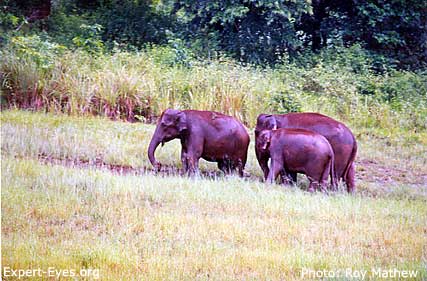
The Supreme Court has already rejected the argument of the State that the raising of the water level would cause much environmental harm to the Periyar Tiger Reserve. The study, on its part, does present additional data to further the argument. However, sufficient material is lacking in support several of the conclusions of the study. Some are erroneous.
The irony is that the conclusions could go against the State’s own proposal for construction of a new dam—the work on a new dam would be causing much more disturbances to the environment than raising the water level. Pursuance of the environmental angle against raising of the water level to the extreme by the State may also give the impression that its main argument-- that the dam is weak and unsafe, is somehow not strong. Loss of life and property should be of bigger concern than limited environmental impact of raising the water level.
The expert Committee that did the study was headed by Dr. Dhrubajyoti Ghosh, Regional Vice Chairman (South Asia), Commission on Ecosystem Management, IUCN and senior Fellow (Development Studies) of Centre for Studies in Social Sciences, Calcutta. The members were Dr. H. S. A. Yahya, Professor, Department of Wildlife Sciences, Aligarh Muslim University and Mr. Saroj Kumar Patnaik, former Additional Principal Conservator of Forests, Orissa.
The Committee itself admits that it did not get enough time for a detailed assessment. Naturally, some of its recommendations sound superficial.
The committee states, in its first recommendation, that the ecological impact of a dam failure will be catastrophic. But, it marshals no supporting material. Of course, the reservoir itself will be lost and it can be assumed that the otters in it would lose their habitat! (The loss of human lives and economic loss to both in Tamil Nadu and Kerala will be very high. However, that is not strictly within the purview of the assessment).
The study says that the increase in water level will hit the critical grasslands of the Periyar ecosystem and could severely endanger the food chain of the endangered tiger. The grasslands referred to here are the ones that came up following lowering of the reservoir level in 1979, and so, that part of the ecosystem is only about three decades old.
Tigers and deers have existed here for centuries and there is little to prove that the deer, which is a rainforest species, is dependent on the grasslands.
The Committee draws attention to the signs of distress and fear visible amongst the tribes and children of settlers on the banks of the reservoir. It seems to have confused between the signs of distress and fear reported from among the people living downstream of the spillway over possible dam failure and concerns of those who have encroached upon the banks. The latter are legally evictable settlers as Government policy only supports regularisation of pre-1977 settlements. However, as the committee points out, there is the risk that the evictees would go back into the forest and exploit the ecosystem.
The committee also recommends that all engineering efforts to raise the water level should be put on hold. It appears that the committee is under the impression that engineering works, requiring movement of men and machinery, are needed to increase the water level. All that is required now at Mullapperiyar to raise the water level is the lowering of the spillway shutters.
The committee points out that raising of the water level and diversion of additional quantities of water out of the Periyar Wildlife Sanctuary would require permission of the Chief Wildlife Warden following notification of the new rules under Wildlife Act in 1993. However, the moot question is whether the rights granted to Tamil Nadu as per the Periyar lease deed on waters falling in 8000 acres had been extinguished at the time of notification of the sanctuary. Tamil Nadu is not seeking any additional quantities of water than granted to it under the more than a century old lease deed.
Expert-Eyes / 2007 |